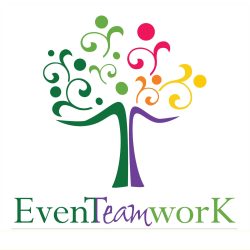Constantly running against multiple deadlines? There are just so many hours in the day and just so much you can do? Yes this is the reality not just for event managers. This makes it all the harder to make any changes to how and why things are done in your organisation. But effective planning can save you time and money.
Our experience in working with hundreds of events demonstrated that investing time in the planning of your volunteer program will achieve better outcomes for your event and organisation. Creating a better volunteer experience does achieve a better customer experience. It will also increase volunteer retention rates, which will save you time and money in the long run due to less recruitment and training needed.
So why is it that so few event organisers embrace this? Why is the strategic approach beyond the next event missing in organisations? I believe the tendency to contract work in the event industry fuels this short-term vision and prevents people from looking beyond their contracts to ensure sustainable organisations.
However, in this world that gets more competitive every day and where more organisations are looking for the same funding or the same sponsorship dollars, can leaders really afford not to look at opportunities that can provide a higher return in the long run? Wouldn’t it be beneficial even to short-term staff to assist organisations stay sustainable to ensure future work opportunities?
But how do you ensure your investment in volunteer program planning is effective and achieves the expected return? Where do you start? We have put together three simple steps you can do to get started with incorporating more volunteer program planning that achieves a positive impact.
1. Vision and impact of our organisation
Every organisation has a vision but sometimes that is forgotten in the day-to-day routine. It is important to check in regularly that all the actions you are taking within the organisation point to your vision and the impact you want to have locally or even on the world.
Reconnecting to the bigger picture of what your organisation is here to achieve can be very empowering. This is especially true when things are tough or when you have fallen into a routine.
It is also great to share this with the rest of your event team. This will not only re-inspire everyone but it also creates a bigger picture in which you operate as an organisation. It will put all your tasks into context and you will make your decisions with view of the bigger picture, even when under time pressure.This post is sponsored by our partners Wigs
Think about how this would influence your supplier choices for example.
2. Create roles strategically
The outcomes you would like to achieve with your event specifically and with your organisation in the long-term determine the tasks that will achieve those outcomes.
For example, if you would like to have visitors enjoying themselves at the event you can create tasks such as welcoming visitors, being available to provide information about the event site and locations readily, directing visitors around the site to achieve a smooth crowd flow, assisting visitors etc.
Often event organisers create tasks on event day based on what needs to be done in that moment. As these tasks were not planned, people were not recruited and trained specifically and often the connection to the vision or the organisation is missing. The results are poor turn up rates at the event, poor customer service and poor retention rates past the current event.
Volunteer roles that are connected to the outcomes are more meaningful for the volunteer and therefore serve the event by creating better customer experiences. The results are higher turn up and retention rates.
3. The plan
Finally the volunteer roles determine when you need to complete each of the tasks for recruitment, engagement, training and onsite management.
As you are planning each of the tasks you will be very focused on the volunteer roles you have created and the outcomes you want to achieve. Organising this in a timeline or planning document will help you stay on track.
Adopting this approach of planning saves time down the track. Focusing on the outcomes means all your actions will be more effective towards achieving those outcomes.
Why not give it a try? Maybe a few months prior to your next event, spend a day with your team reconnecting to the organisational vision and the outcomes you are trying to achieve. Then plan the volunteer roles and then set the tasks for implementing the volunteer program.
Do you notice a difference? I would be keen to hear your comments on how the planning of your volunteer program is working.
If you would like a simple template to follow this 3-step process download our free Volunteer Program Planning Template.



